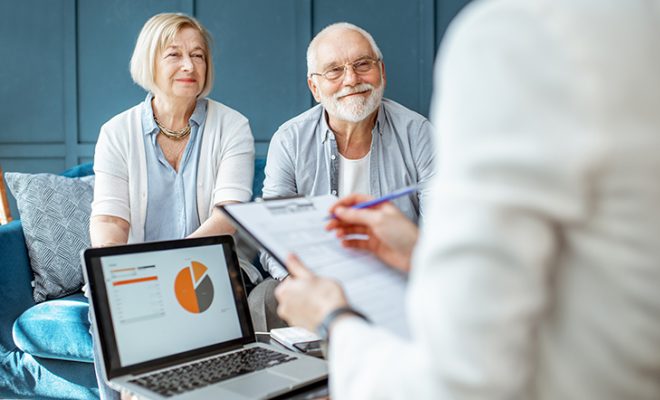6 Portfolio Red Flags You Should Assess Before Turning 50

By the time you enter your 50s, you are quite close to retirement. Some advocates of FIRE (financial independence, early retirement) may also already be retired by this time. Regardless of your retirement preferences, this time can be extremely crucial. Your children could be ready for college, you may start developing health issues, and with limited time to gather your savings, even a small mistake can turn into a financial blunder. This is why, before you turn 50, it helps to re-evaluate your portfolio and the investment decisions taken so far. If you find any discrepancies, you can take suitable action for it.
Here are 6 portfolio red flags that you should assess before turning 50.
- Opting for conservative investments earlier than necessary
While it is true that experts often recommend opting for safer investments close to retirement, it may not be applicable to all portfolios and individuals. As important as it is for you to ensure financial security in your 50s and beyond, the years preceding this age can allow you to take bigger risks. You must keep in mind that stocks, although risky, can offer you higher returns. Therefore, instead of completely blocking them out and removing them from your portfolio, it can be more beneficial to create an equilibrium between risky and safe investments. If you find your portfolio inclined to lower returns only, this is a good time to change your strategy and reallocate your funds. - Over-diversifying the portfolio
The second red flag can be an overdiversified portfolio. One of the most common mistakes that investors of all ages make is to not understand the distinction between diversification and over-diversification. While the former is your portfolio’s biggest ally, the latter can be its hidden enemy. Over-diversification can lead to loss-making assets and investments. As a result, your returns can be considerably low. The time before you turn 50 can seem like a limited window to experiment before retirement concerns take over. This can lead some investors to go overboard with diversification. Therefore, it is recommended to consult a financial advisor to draw a line and make choices that can suit your individual needs and requirements. - Making up for lost opportunities of the past with volatile choices
Investing can be a complex and intricate process. Some people may take years to grasp on to its concepts and be able to make profitable decisions. You can also lose out on market opportunities in your youth due to several factors, like a limited salary, student loans, mortgage, etc. However, your late 40s can be a time where you could find yourself more settled with sufficient funds at your disposal. This can prompt some people to invest more and sometimes in volatile choices to make up for the lost time. While it is good to try and recover any losses or lapses of the past, it is not advisable to consider volatile assets at this stage in life. High risk investments can offer you increased returns, but they also pose a threat to your savings. Be mindful to not lose your hard-earned money by being over-ambitious. Keep an eye on volatile assets on your portfolio and try to limit these flags as you move closer to turning 50. - Not maximizing on retirement accounts
This can particularly be a problem for those who may want to continue working beyond the general age of retirement i.e. 60 years. The illusion of having more time at hand can deter you from optimally using your retirement accounts. For instance, if you have a 401 (k) account, it is vital to make sure to match your employer’s contribution. It also helps to keep yourself updated on the maximum contribution limits and catch up contribution limits to make the most of such accounts. In 2020, you can contribute up to $19,500 in a year towards a 401 (k) account. You can also contribute $25,500 if you are 50 or older and add $6,500 as catch-up contributions. For Individual retirement accounts (IRAs), you can contribute up to $6,000 or $7,000 if you are 50 or older in 2020. - Ignoring to account for inflation
The end goal of your savings and investments is to create a portfolio that can withstand your retirement needs. While you start creating your retirement corpus in your 20s or 30s, you may find it hard to ascertain the surplus you would need to meet the rising costs of the future years effectively. However, by the time you approach your 50s, you would be in a better position to gauge whether or not your past investments have stood the test of time. This will help you add or remove certain categories form your portfolio. You can also make a better estimate of how inflation can affect your lifestyle post retirement. This information is valuable as it lets you create a new plan for the future. You can get rid of older investments if they have not been able to offer you good results and move on to newer instruments with more promise. In addition to this, you can also re-evaluate your personal financial needs with growing age and changing times. - Not having a healthcare plan
The late 40s and early 50s can bring about many changes in a person’s life. This is also a pivotal time when your body may start showing signs of aging. Illnesses can surface without a warning and disrupt your life both professionally and financially. While it is normally advised to get a health insurance plan as early in life as possible, if you do not have one by this age, you must get one immediately. Walking into your 50s without having a financial backup for hospital bills can be detrimental to your savings. The rising costs of healthcare can overthrow all your financial planning. To avoid this, make sure that you have a healthcare plan in place that can safeguard you and your family in such unfavorable times.
To sum it up
These mistakes are red flags in the way of living a comfortable and relaxed life. The sooner you identify and rectify them, the faster you can move towards your goals. Remember that it is advantageous to revisit and reassess your portfolio at different stages of your life and not just before turning 50. Every age will present before you newer wants and needs, that may require you to adjust your portfolio.
For further assistance on how to assess and strategize your retirement plan, consider getting a professional consultation from a financial advisor. Use the free match service and get connected with 1-3 financial advisors that may be able to help you.










